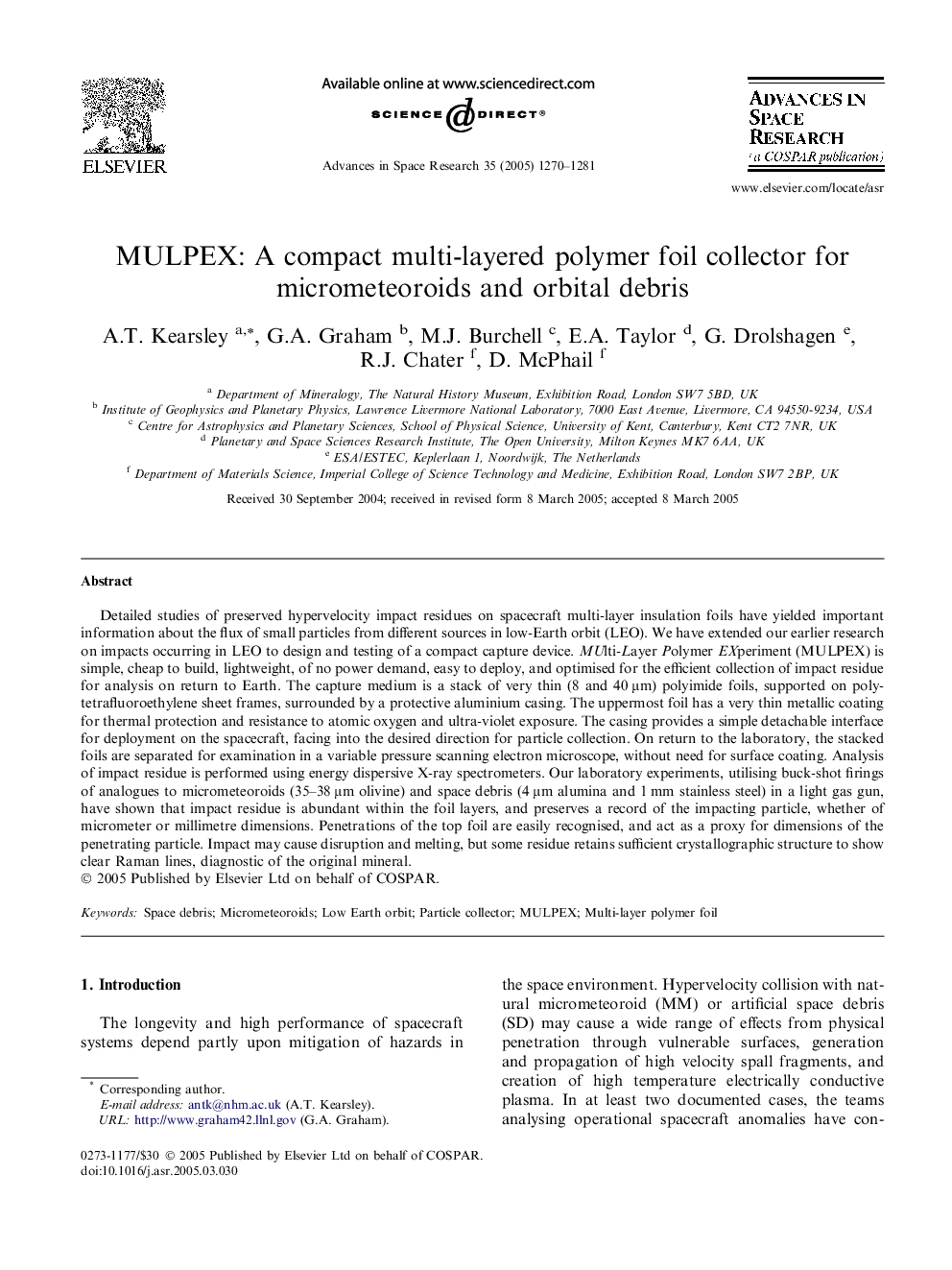| Article ID | Journal | Published Year | Pages | File Type |
|---|---|---|---|---|
| 10694544 | Advances in Space Research | 2005 | 12 Pages |
Abstract
Detailed studies of preserved hypervelocity impact residues on spacecraft multi-layer insulation foils have yielded important information about the flux of small particles from different sources in low-Earth orbit (LEO). We have extended our earlier research on impacts occurring in LEO to design and testing of a compact capture device. MUlti-Layer Polymer EXperiment (MULPEX) is simple, cheap to build, lightweight, of no power demand, easy to deploy, and optimised for the efficient collection of impact residue for analysis on return to Earth. The capture medium is a stack of very thin (8 and 40 μm) polyimide foils, supported on poly-tetrafluoroethylene sheet frames, surrounded by a protective aluminium casing. The uppermost foil has a very thin metallic coating for thermal protection and resistance to atomic oxygen and ultra-violet exposure. The casing provides a simple detachable interface for deployment on the spacecraft, facing into the desired direction for particle collection. On return to the laboratory, the stacked foils are separated for examination in a variable pressure scanning electron microscope, without need for surface coating. Analysis of impact residue is performed using energy dispersive X-ray spectrometers. Our laboratory experiments, utilising buck-shot firings of analogues to micrometeoroids (35-38 μm olivine) and space debris (4 μm alumina and 1 mm stainless steel) in a light gas gun, have shown that impact residue is abundant within the foil layers, and preserves a record of the impacting particle, whether of micrometer or millimetre dimensions. Penetrations of the top foil are easily recognised, and act as a proxy for dimensions of the penetrating particle. Impact may cause disruption and melting, but some residue retains sufficient crystallographic structure to show clear Raman lines, diagnostic of the original mineral.
Related Topics
Physical Sciences and Engineering
Earth and Planetary Sciences
Space and Planetary Science
Authors
A.T. Kearsley, G.A. Graham, M.J. Burchell, E.A. Taylor, G. Drolshagen, R.J. Chater, D. McPhail,
